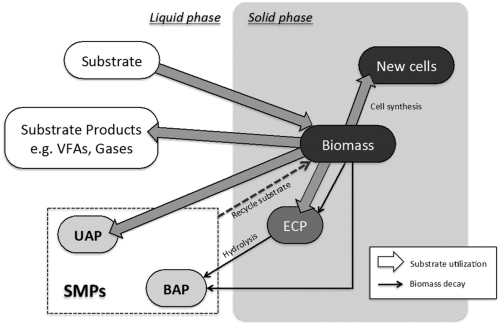
Effluents from biological processes contain a wide range of complex organic compounds, including soluble microbial products (SMPs) and extracellular polymers (ECPs), released during bacteria metabolism in mixed cultures in bioreactors.
It is important to clearly identify the primary components of SMPs and ECPs, in order to understand the fundamental mechanisms of biological activity that create these compounds, and how to reduce these compounds in the effluent.
In addition, these compounds constitute the main foulants in membrane bioreactors, which are being used more widely around the world.
Here researchers at Nanyang Technological University in Singapore and Imperial College London in the UK review the extraction of ECPs, characterisation and identification of SMPs and ECPs, and summarise the latest pre-treatments and analytical methods for SMPs.
Most research so far has focused on the overall properties of SMPs and ECPs, such as their concentrations, molecular weight distribution, aromaticity, hydrophobic and hydrophilic properties, biodegradability, and toxicity characteristics.
Many studies on the identification of effluent SMPs show that most of these compounds were not present in the influent, such as humic acids, polysaccharides, proteins, nucleic acids, organic acids, amino acids, exocellular enzymes, structural components of cells, and products of energy metabolism.
A few groups of researchers have been working on the identification of compounds in SMPs, using advanced analytical techniques such as gas chromatography–mass spectrometry (GC–MS), liquid chromatography-ion trap-time of flight-mass spectrometry (LC-IT-TOF-MS), and matrix-assisted laser desorption/ionisation-time of flight-mass spectrometry (MALDI-TOF-MS).
However, considerably more work still needs to be done analytically to fully understand the chemical characteristics of SMPs and ECPs.




